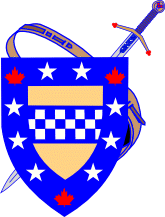Branches and Septs
Introduction to Clans and Septs ![]()
In the context of Scottish clans, septs are families that followed another family's chief. These smaller families would then comprise, and be part of, the chief's larger clan. A sept might follow another chief if two families were linked through marriage or if a family lived on the land of a powerful laird, they would follow him whether they were related or not. Bonds of manrent were sometimes used to bind lesser chiefs and his followers to more powerful chiefs. According to the Oxford Companion to Scottish History, the McMartin’s of Letterdinlay were a sept of Clan Cameron would have seen themselves as distinct within their own lands, but would have also seen themselves as a Cameron if operating elsewhere outside of Loch-Aber. Bonds of manrent and friendship tied obviously non-related kin groups into a wider military, political, and land/food resource sharing clan-ship.
Today, sept lists are used by clan societies to recruit new members. Such lists date back to the 19th century when clan societies and Tartan manufacturers attempted to capitalize on the enthusiasm and interest for all things Scottish. Lists were drawn up that linked as many surnames as possible to a particular clan. In this way, individuals without a "clan name" could connect to a Scottish clan and thus feel "entitled" to its tartan.
One modern member of the Lyon court has described the attribution of such names to specific clans as sometimes being based upon nothing but imagination, and in other cases upon a single recorded instance of a surname.
Also, common surnames, found throughout the British Isles, were linked to clans. For example, the surname Millar / Miller was made a sept of Clan Macfarlane, and Taylor of Clan Cameron. Furthermore, patronymic forms of common personal names were also linked to specific clans. This has led to the false impression that many surnames have one origin and are all related to one another, and that such surnames are historically connected to one specific clan.

